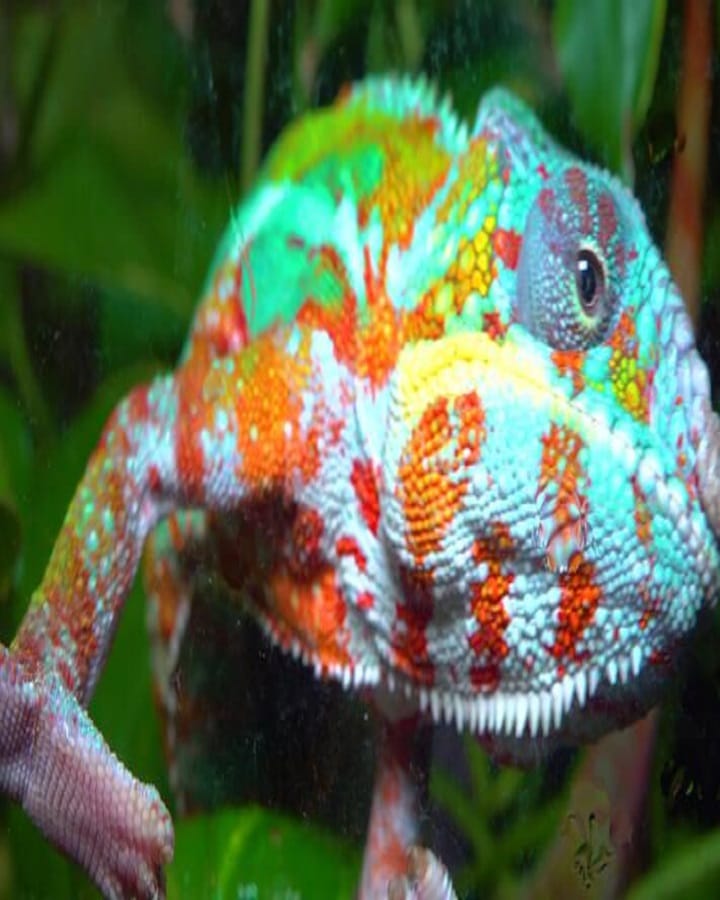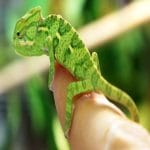
Image Credit – Hema
The Chamaeleo gracilis, commonly known as the Graceful Chameleon, is a fascinating reptile native to the forests and savannas of Central and West Africa. With its slender body, prehensile tail, and expert camouflage abilities, this species is a true marvel of nature. Whether you’re an enthusiast of exotic reptiles or simply curious about unique wildlife, learning about this chameleon’s lifestyle, habitat, and adaptations is a journey worth taking.
Chamaeleo Gracilis Graceful Chameleon

Physical Characteristics
The Graceful Chameleon lives up to its name with an elongated body, a narrow head, and a tail that accounts for nearly half of its total length. This species typically grows between 25-35 cm (10-14 inches) in length, making it a medium-sized chameleon.
Its coloration varies depending on environmental factors and mood, shifting between green, brown, and yellowish tones. This natural ability allows it to blend seamlessly into its surroundings, making it a highly effective predator while staying hidden from threats. Like all chameleons, Chamaeleo gracilis has:
- Independently moving eyes, which provide a 360-degree field of vision.
- A long, sticky tongue, capable of shooting out to snatch insects in a fraction of a second.
- Zygodactylous feet, where two toes point forward and two point backward, ensuring a firm grip on branches.
Habitat and Distribution
This species thrives in various ecosystems, ranging from tropical rainforests to dry savannas. It is commonly found in Cameroon, Ghana, Nigeria, and the Democratic Republic of the Congo, among other African nations. Unlike some chameleons that strictly prefer dense jungle canopies, the Graceful Chameleon can adapt to more open woodlands and even human-modified landscapes.
Diet and Hunting Strategies
The Chamaeleo gracilis is an insectivore, feeding on a diverse diet of:
- Crickets
- Grasshoppers
- Beetles
- Moths
- Small spiders
Its ambush hunting technique is both efficient and fascinating. Remaining perfectly still, it patiently waits for unsuspecting prey before launching its specialized tongue—up to twice its body length—to capture its meal in milliseconds.
Camouflage and Defense Mechanisms
One of the most impressive traits of the Graceful Chameleon is its color-changing ability. While not as dramatic as some other species, it adjusts its coloration for:
- Blending into its environment
- Regulating body temperature
- Expressing emotions (stress, excitement, or aggression)
When feeling threatened, it may also puff up its body, darken its colors, and sway like a leaf in the wind, further enhancing its camouflage and deterring predators.
Reproduction and Lifecycle
This species is oviparous, meaning it lays eggs rather than giving birth to live young. Females deposit 20-40 eggs in soft soil, where they incubate for several months before hatching. The newborn chameleons are independent from birth, ready to climb and hunt from their very first moments.
Conservation and Threats
Currently, Chamaeleo gracilis is not listed as endangered, but its populations face risks due to:
- Habitat destruction (deforestation, land development)
- The pet trade, where wild-caught individuals often face high mortality rates
- Climate change, which impacts its natural habitats
Sustainable practices and responsible pet ownership are crucial to protecting this incredible species.
Keeping a Graceful Chameleon as a Pet
For reptile enthusiasts, the Graceful Chameleon can be a rewarding pet—but it requires specialized care. A proper setup includes:
- A well-ventilated terrarium with vertical climbing space
- UVB lighting to support calcium metabolism
- High humidity levels (60-80%)
- A drip watering system, as chameleons don’t drink from standing water
- A diverse diet of gut-loaded insects
Because of their delicate nature, these chameleons are best suited for experienced reptile keepers rather than beginners.
The Graceful Chameleon (Chamaeleo gracilis) is a stunning example of nature’s adaptability. Whether thriving in the wild or carefully kept in captivity, this species continues to amaze with its color-changing abilities, stealthy hunting skills, and graceful movements. As we learn more about these reptiles, we also gain a deeper appreciation for the delicate balance of their ecosystems and the need for responsible conservation efforts. Would you like to explore more about chameleon care, conservation, or related species? Let me know!
Frequently Asked Questions
What is the scientific name of the Graceful Chameleon?
The scientific name of the Graceful Chameleon is Chamaeleo gracilis. It belongs to the family Chamaeleonidae and is commonly found in Central and West Africa.
Where is the Graceful Chameleon found?
This species is native to Central and West Africa, including countries like Ghana, Nigeria, Cameroon, and the Democratic Republic of the Congo. It inhabits tropical forests, savannas, and shrublands, often adapting to both dense and semi-arid environments.
How big does a Graceful Chameleon get?
Adult Chamaeleo gracilis can grow between 25-35 cm (10-14 inches) in length, including the tail. Males tend to be slightly smaller and more slender than females.







